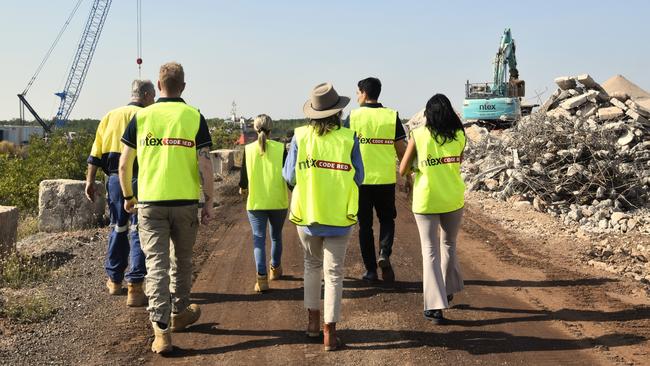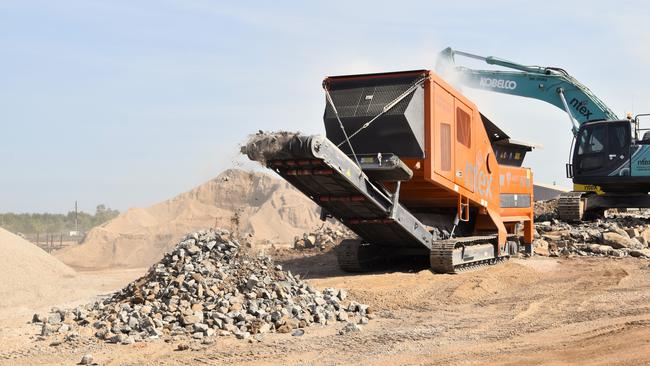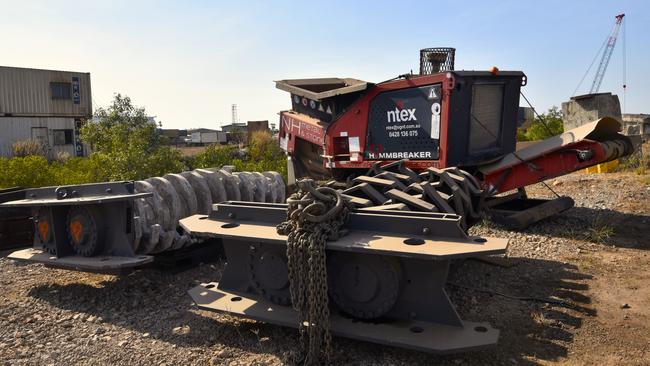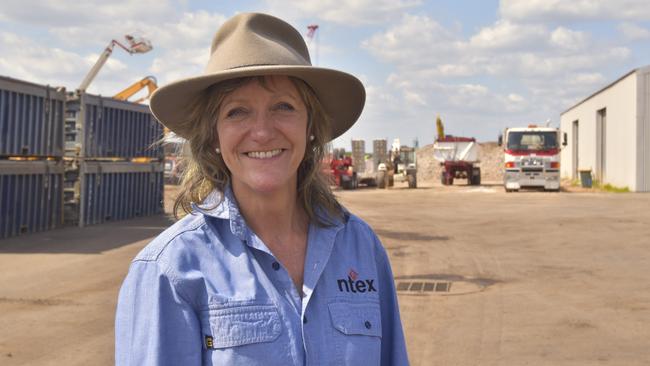NTEX Code Red drives environmental sustainability by recycling concrete, tyres,
A homegrown civil contracting company is shaping an environmentally-sustainable future in the NT. Read how.

Business
Don't miss out on the headlines from Business. Followed categories will be added to My News.
Treating waste as a resource to be used in new projects is the foundation of one company’s innovative approach to demolition.
Territory-grown civil contracting company NTEX Code Red has delivered Darwin’s first dedicated concrete recycling service and focuses on driving environmental sustainability in the construction industry.
With a 93 per cent waste recovery rate on its demolition projects – such as recent contracts at Don Dale and Parap Pre-School – NTEX is driving circular economy opportunities in the construction industry.
Director Gerry Breen said breaking down concrete blocks to a “type two aggregate” meant materials from old buildings could be given new life as roads or pathways.
Mr Breen said the company’s newest machine from Germany – which could recycle four waste streams – allowed the company to diversify into tyre recycling.
He said NTEX could dispose of about a tonne of tyres in four minutes.


Business Development manager Eileen Breen said tyre recycling was not typically “viable as a stand-alone business” in Darwin, but was possible for NTEX.
“It makes sense for us (to do it), because we’re doing different waste streams and we have the one piece of equipment – just a different cartridge in it that can do that,” she said.
“But if you were to just say, ‘yep, we’re going to set up a new business and it’s just doing tyres’, you couldn’t do it.”

Mrs Breen is also the recently-appointed president of the Waste Recycling Industry Association NT.
She said NTEX had recycled more than 71,000 tonnes of concrete and asphalt waste – the equivalent of 22,187 fully loaded LandCruisers worth of waste – since July 2020.
Mrs Breen said lining those waste-filled LandCruisers along the Stuart Hwy would stretch from Darwin to Adelaide River.
“That’s 71,000 tonnes of waste that would have ended up in landfill, but instead has been given a new lease of life,” she said.




